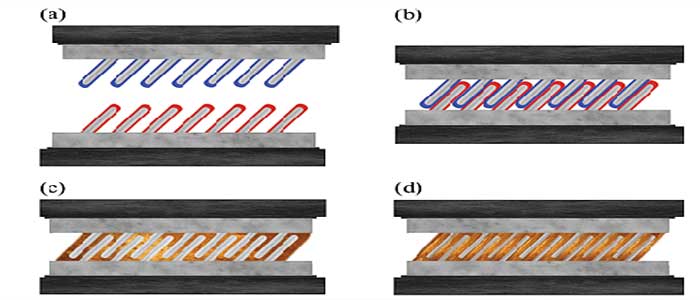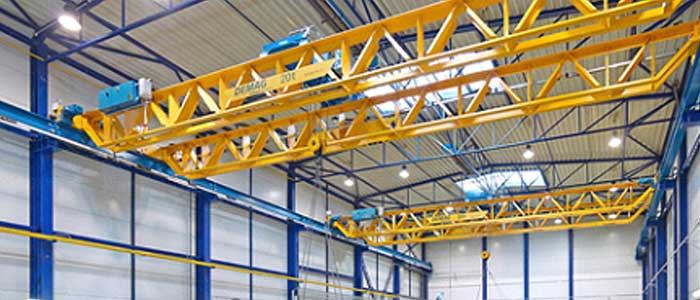Industrial crane innovations improves industrial cranes’ performances. 2015 had its ups and downs, however there were many leaps forward in both industrial crane technology and innovation in the past year including out of the welding and material handling industries.
Here are 4 Amazing Innovations from across our crane industry from 2015.
MesoGlue, developed by Hanchen Huang, a professor at Northeastern University, uses nanorod technology to fuse items together without heat, potentially replacing soldering and possibly welding.

Nanorods are tiny metal rods just 10-20 nonmeters wide, synthesized from metals or semiconducting materials. MesoGlue works by coating these nanorods with iridium on one side and gallium on the other. Then once interlaced, much like teeth on a zipper, the two chemical elements form a liquid, which reacts with the metal from the nanorods and thus hardens into a solid bond in just under a minute.
This process can be achieved at room temperature and creates a solidified glue that is thermally and electrically conductive and a bond as strong as a traditional weld.
Possible potential applications for this new innovation is in the electronic design industry, used to pack circuit board components closer together than traditional soldering can achieve.
In 2014, Demag, a world leader in overhead crane design, changed the way we look at load handling with the introduction of the V-type Girder. The innovative composition of "V" shaped supports through the structures interior create an organic tensile strength, much like the interior structure of bone.

Demag V type overhead crane
This design utilizes material only where it's needed, leading to a reduced weight of the overall girder by up to 17%. This reduction in weight also lessens the load on the existing support structure, which allows for higher capacity lifting. In November of 2015, Demag released the V-type Double Girder Crane. With load capacities of up to 50 tonnes and offering spans of up to 35m as standard, and longer girder lengths available upon request.
For over 35 years Gorbel Inc. has been providing overhead material handling solutions to customers in a wide range of industries and applications. In 2012, after witnessing an employees child go through strenuous rehabilitation treatments after an accident, Gorbel President and CEO Brian Reh had an idea.
The Gorbel’s G-Force intelligent lifting device uses a patented “float mode” to allow heavy objects and materials to be moved with precision and little effort by an operator. Why not incorporate this technology to help patients rehabilitation be safer and easier?
Over the next few years, and with the help of countless experts in the medical and rehabilitation field, Gorbel Medical was born and SafeGait 360 was developed.
The SafeGait 360⁰ Balance and Mobility Trainer is a ceiling-mounted, dynamic body-weight support system. It is designed to protect patients and therapists during standing, sitting, stair and floor tasks. Patients are secured in a harness that is attached to an overhead rail system guided by a computer system that is sensitive to the patients every move. SafeGait accommodates patients up to 350 pounds and dynamically unweights patients up to 50% of their bodyweight to allow the security and safety each patient needs for their rehabilitation.
With the retirement of the Space Shuttle Program in 2010, and the cancellation of the Constellation Program in 2011, NASA was looking to create their most powerful rocket yet, a single launch vehicle usable for both crew and with about 20% more thrust than Saturn V.
Dubbed the Space Launch System (SLS), NASA has hopes to complete their new ambitious project for its first launch in 2018. However, to build a big rocket ship, you need big tools.
Enter the Vehicle Assembly Centre (VAC), a huge welding tool that will help construct the core stage of the Space Launch System.
Though originally unveiled in September of 2014, the VAC has spent the last year in its final stages of construction and was handed over from the construction contractor ESAB to Boeing at the end of the year. Coming in at 170-foot-tall and 78-foot-wide, the giant structure completes a world-class welding toolkit. The VAC will be where domes, rings and barrels will be joined together to complete the tanks or dry structure assemblies. The tool also will perform nondestructive evaluation on the completed welds.